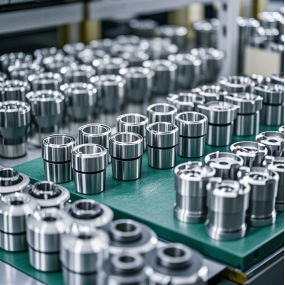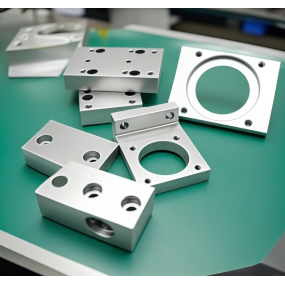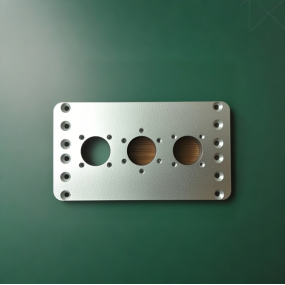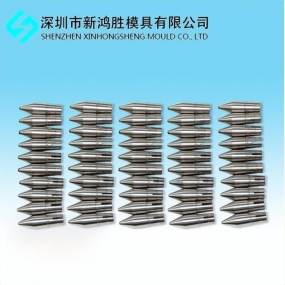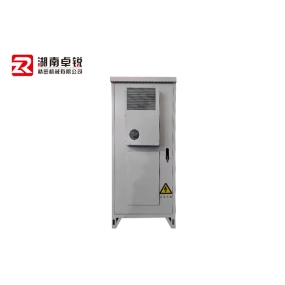On a lathe, the rotary movement of the workpiece and the linear or curvilinear movement of the tool are used to change the shape and size of the blank, and it is processed to meet the requirements of the drawing.
Ordinary machine tools are increasingly difficult to meet the needs of machining precision parts. At the same time, due to the improvement of production level, the price of numerical control machine tools is falling from time to time. CNC precision parts processing mainly includes ultra-precision turning, mirror grinding and grinding.
The first prerequisite for CNC precision parts machining is the accuracy of the process reference. The reference on the mechanical drawings is represented by a specific circled reference symbol with capital letters A, B, C, D, etc. When the reference symbol is aligned with the surface and the extension line of the surface or the size limit of the surface, it means that the surface is the reference. When the reference symbol is aligned with the size line, it means that the center line of the entity marked with the size is the reference. Earlier, I mentioned that the process accuracy is a relatively general point.
Assembly reference refers to the assembly used to determine the precise position of the part in the component or product. Measurement reference refers to the specification used to measure the size and position of the machined surface during the inspection of the part. Positioning reference refers to the reference used to position the workpiece in the machine tool or fixture during processing.
The process benchmark of CNC precision parts machining is the prerequisite for ensuring the production of high-quality parts.


 Spanish
Spanish Arabic
Arabic French
French Portuguese
Portuguese Belarusian
Belarusian Japanese
Japanese Russian
Russian Malay
Malay Icelandic
Icelandic Bulgarian
Bulgarian Azerbaijani
Azerbaijani Estonian
Estonian Irish
Irish Polish
Polish Persian
Persian Boolean
Boolean Danish
Danish German
German Filipino
Filipino Finnish
Finnish Korean
Korean Dutch
Dutch Galician
Galician Catalan
Catalan Czech
Czech Croatian
Croatian Latin
Latin Latvian
Latvian Romanian
Romanian Maltese
Maltese Macedonian
Macedonian Norwegian
Norwegian Swedish
Swedish Serbian
Serbian Slovak
Slovak Slovenian
Slovenian Swahili
Swahili Thai
Thai Turkish
Turkish Welsh
Welsh Urdu
Urdu Ukrainian
Ukrainian Greek
Greek Hungarian
Hungarian Italian
Italian Yiddish
Yiddish Indonesian
Indonesian Vietnamese
Vietnamese Haitian Creole
Haitian Creole Spanish Basque
Spanish Basque

